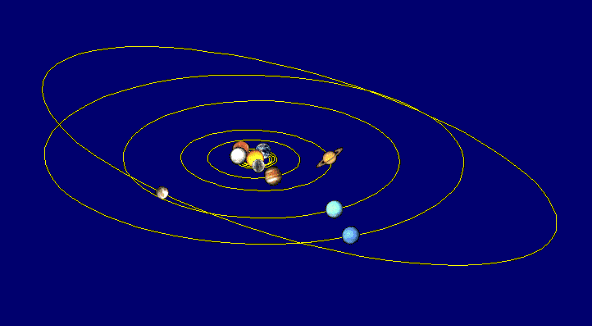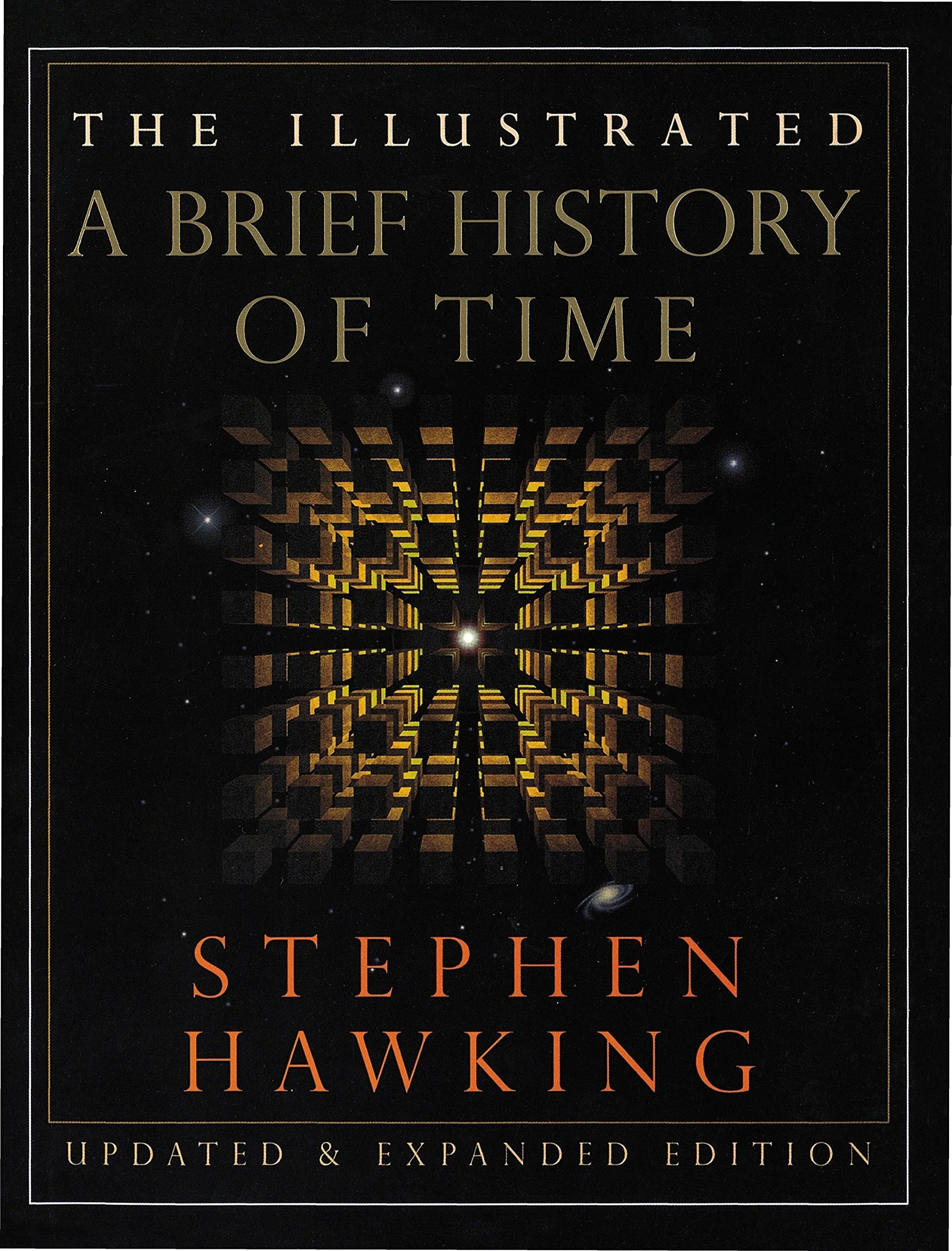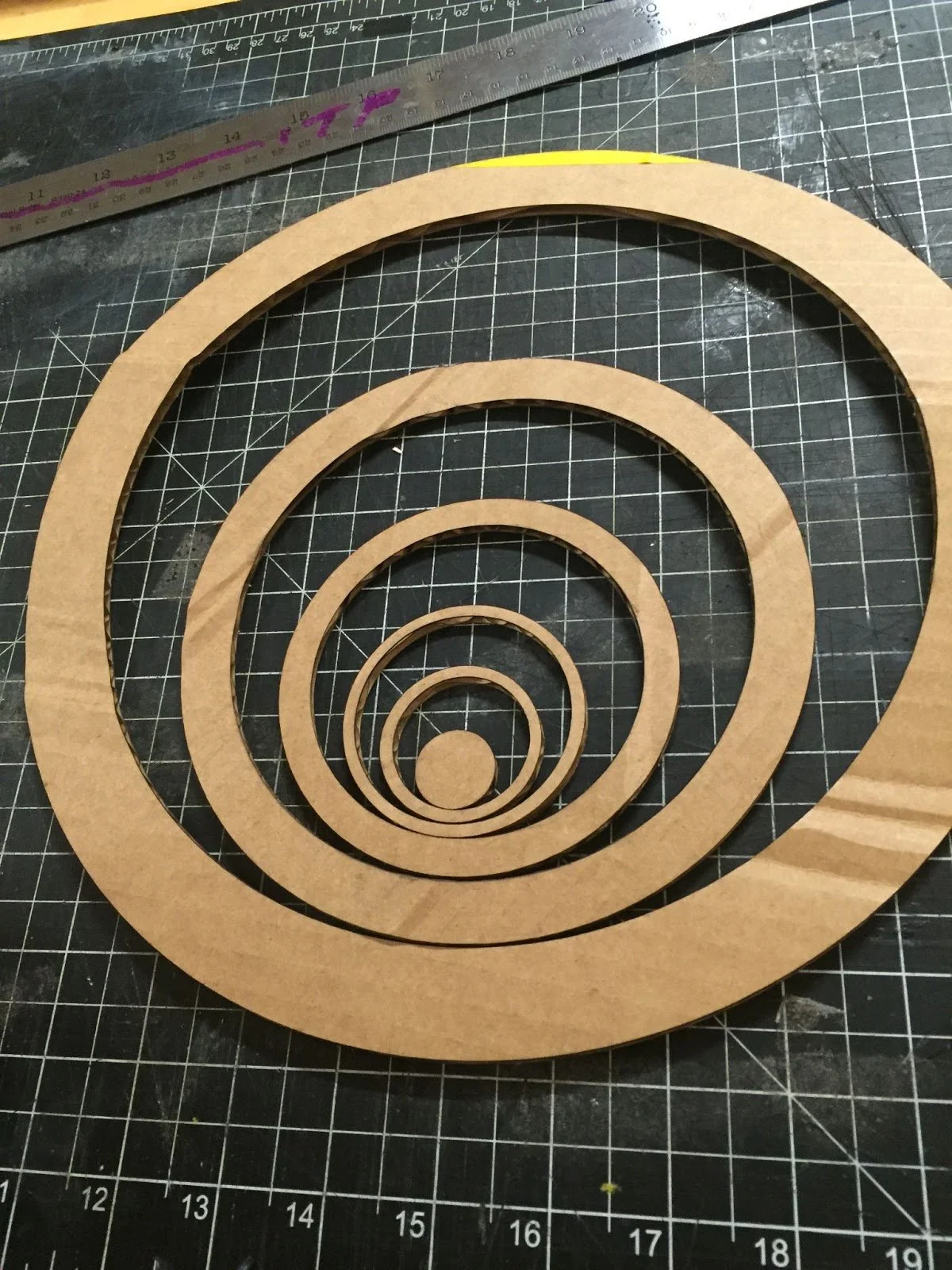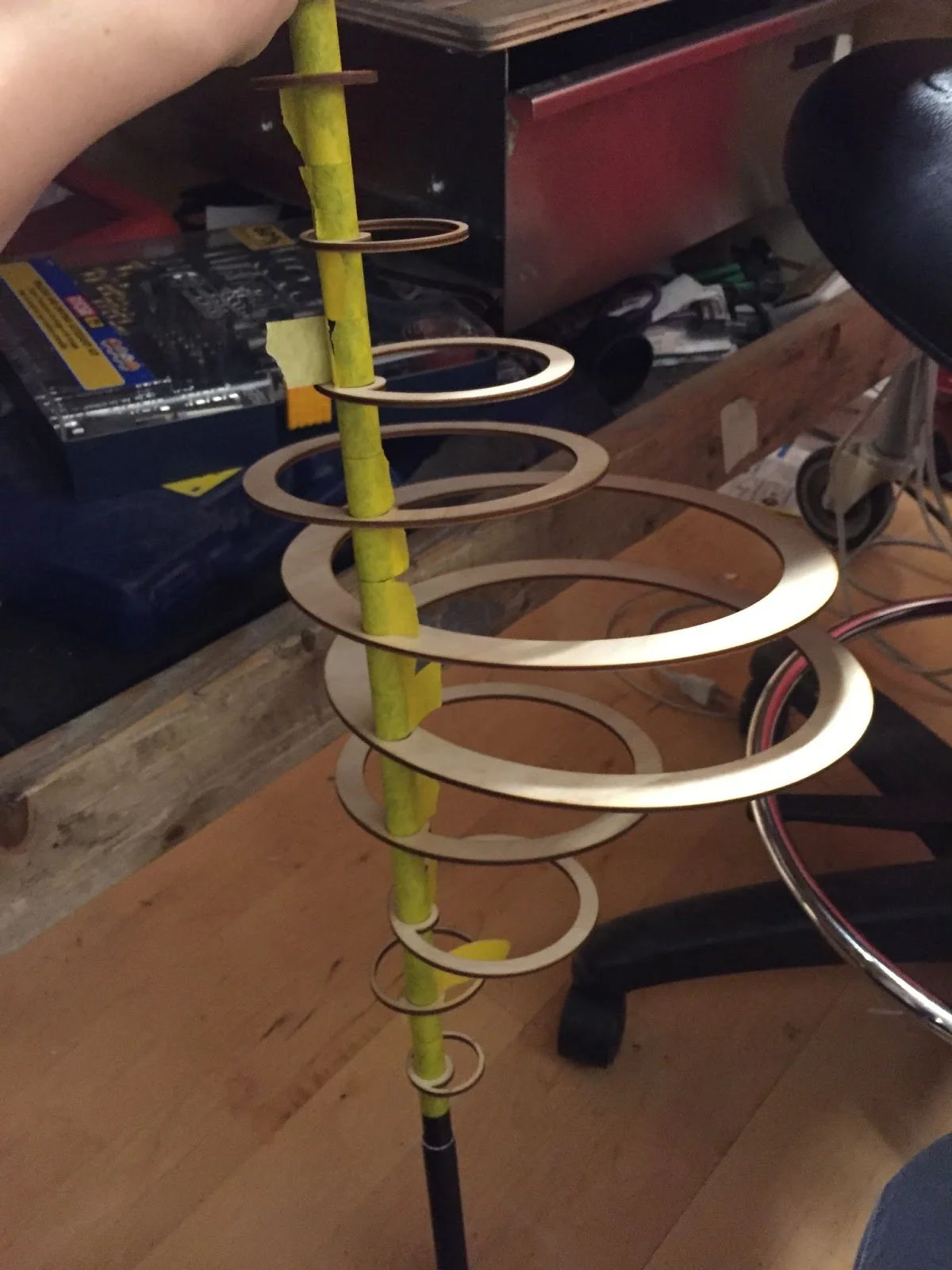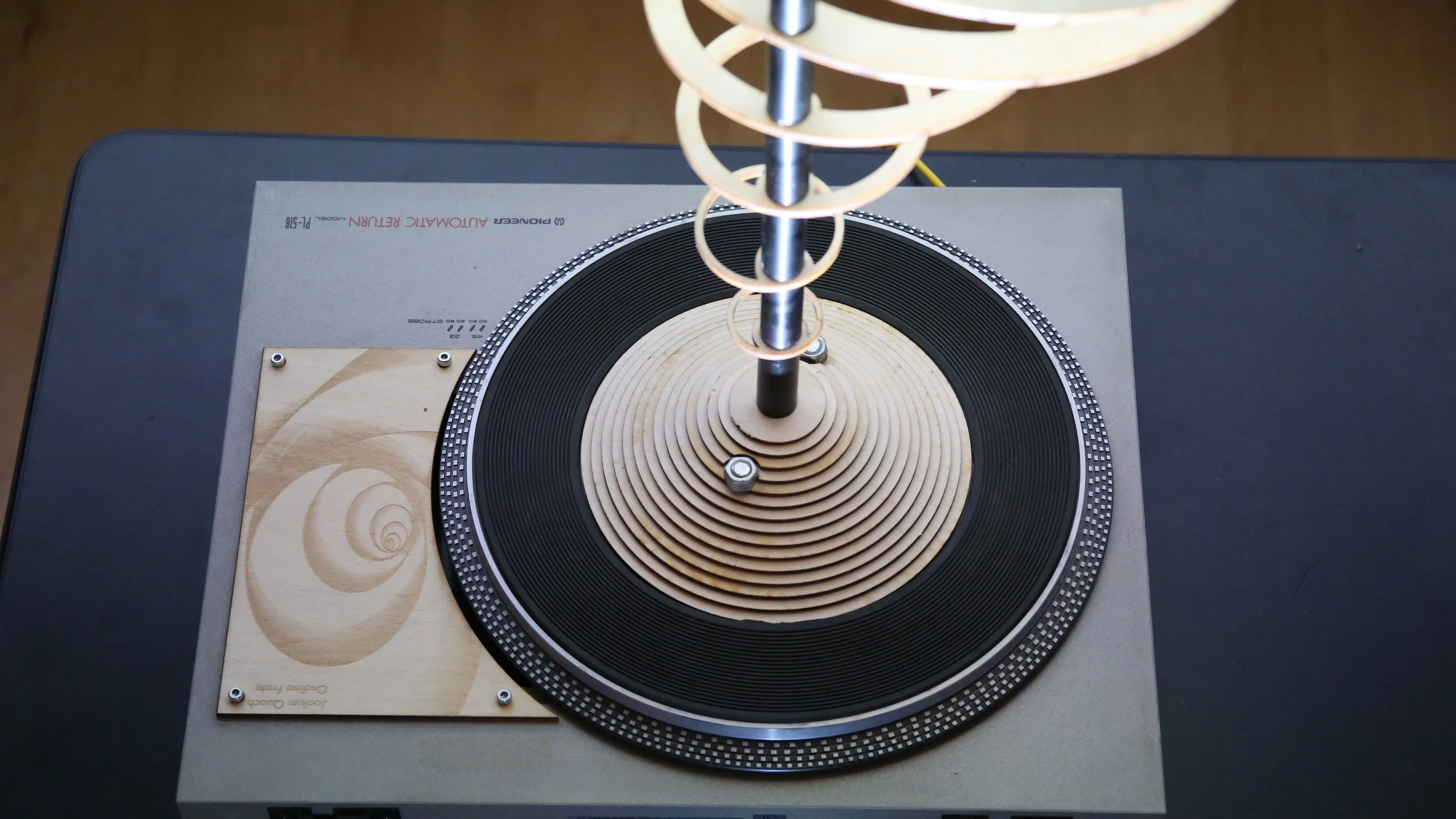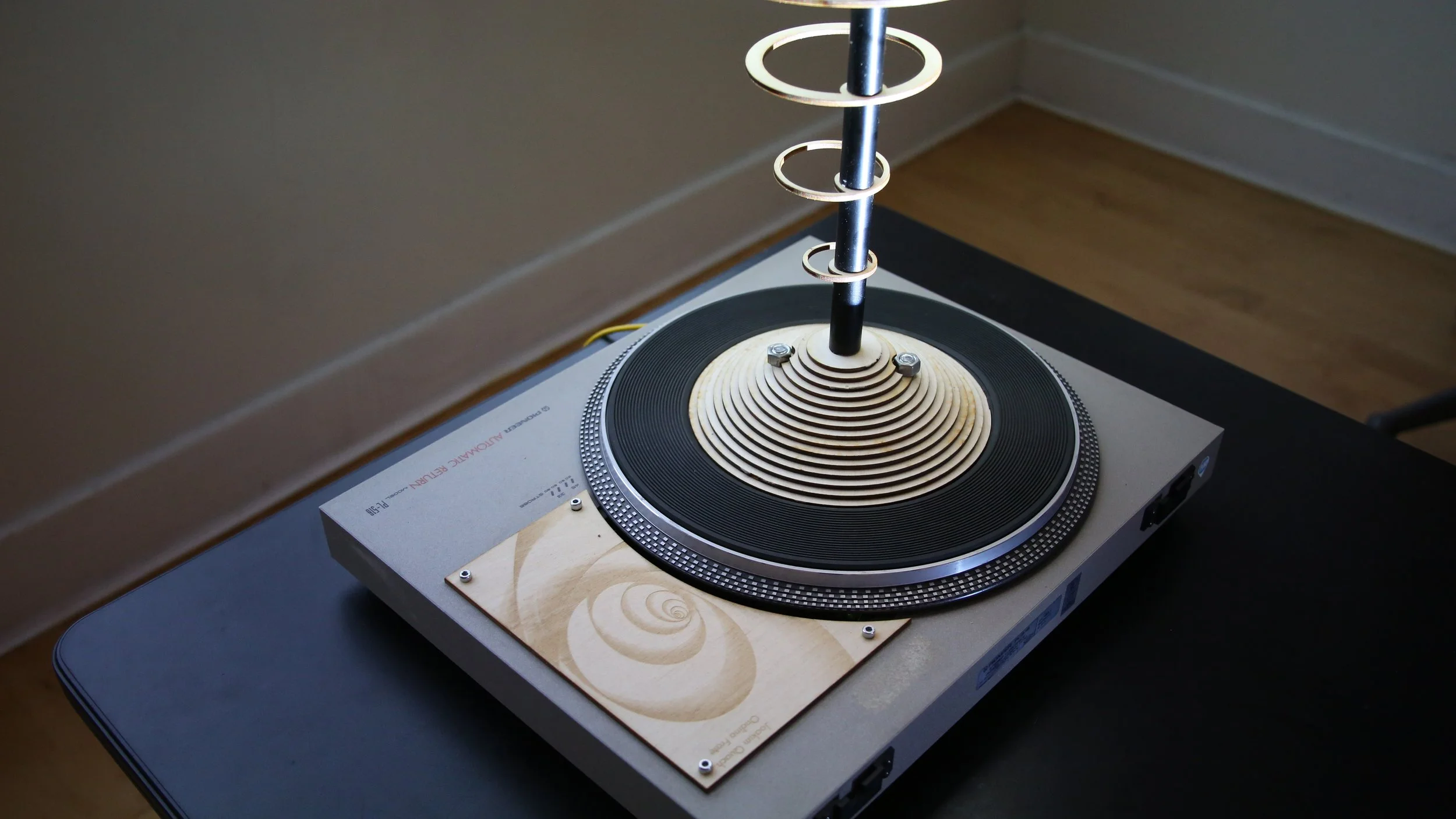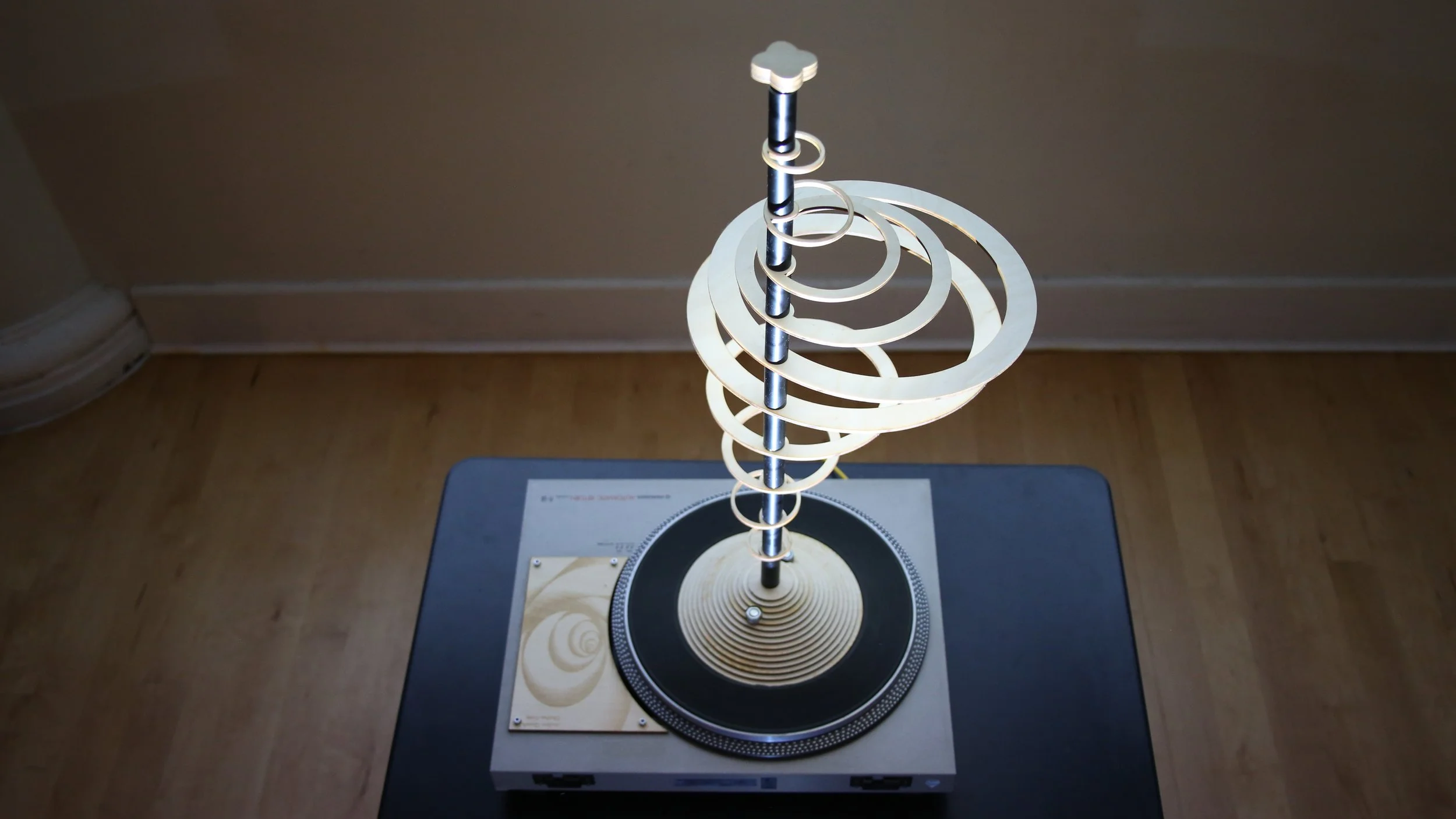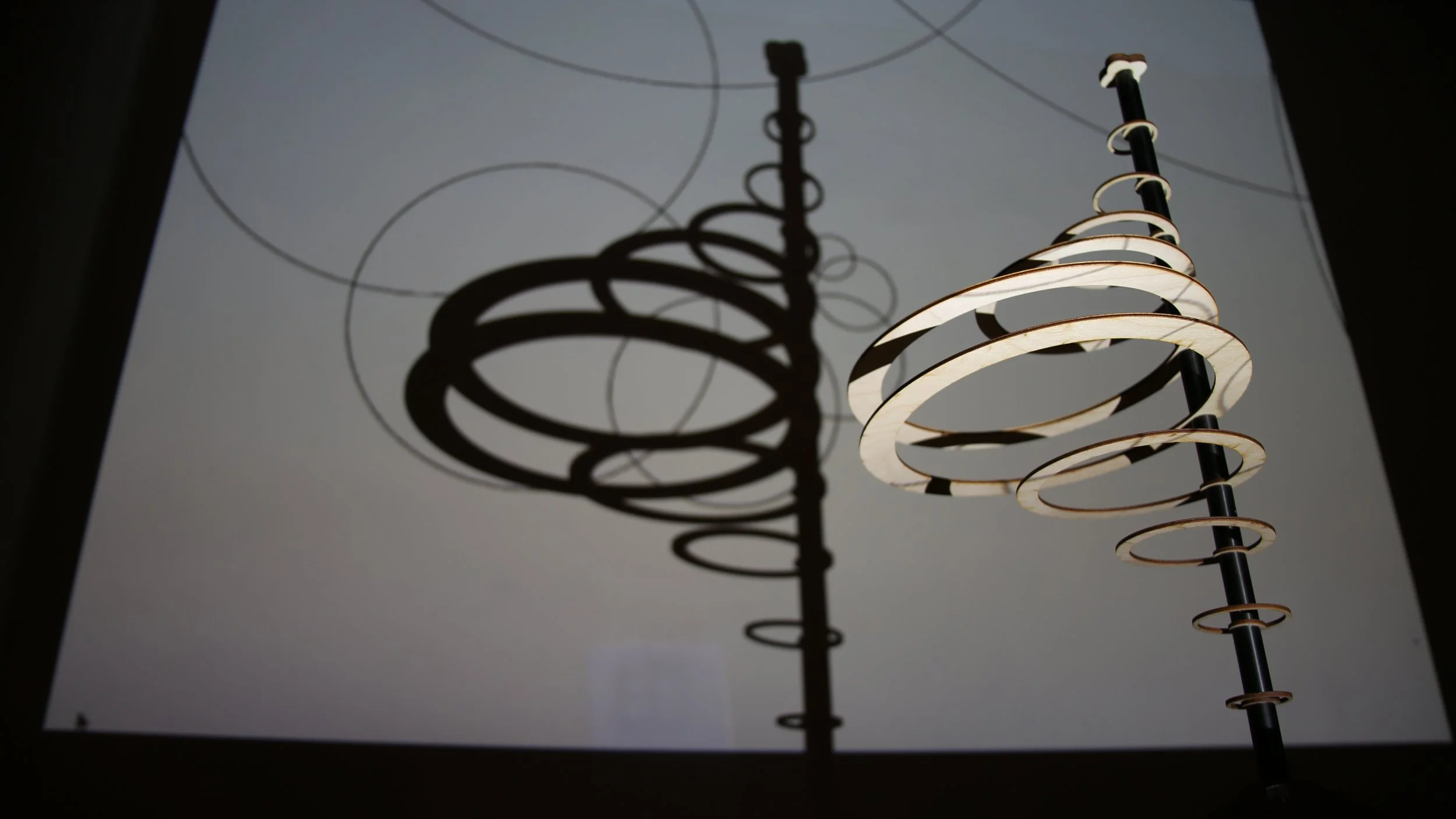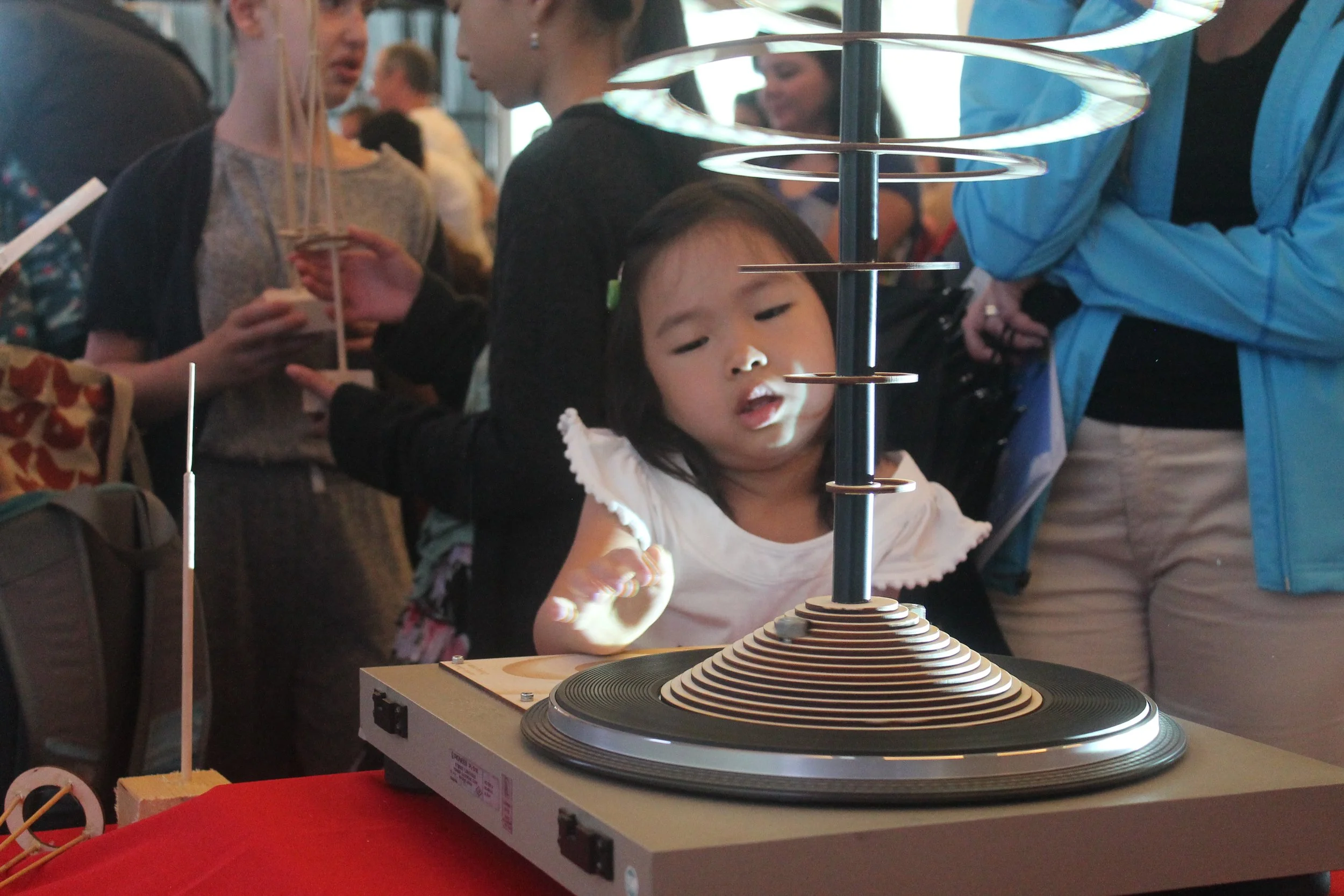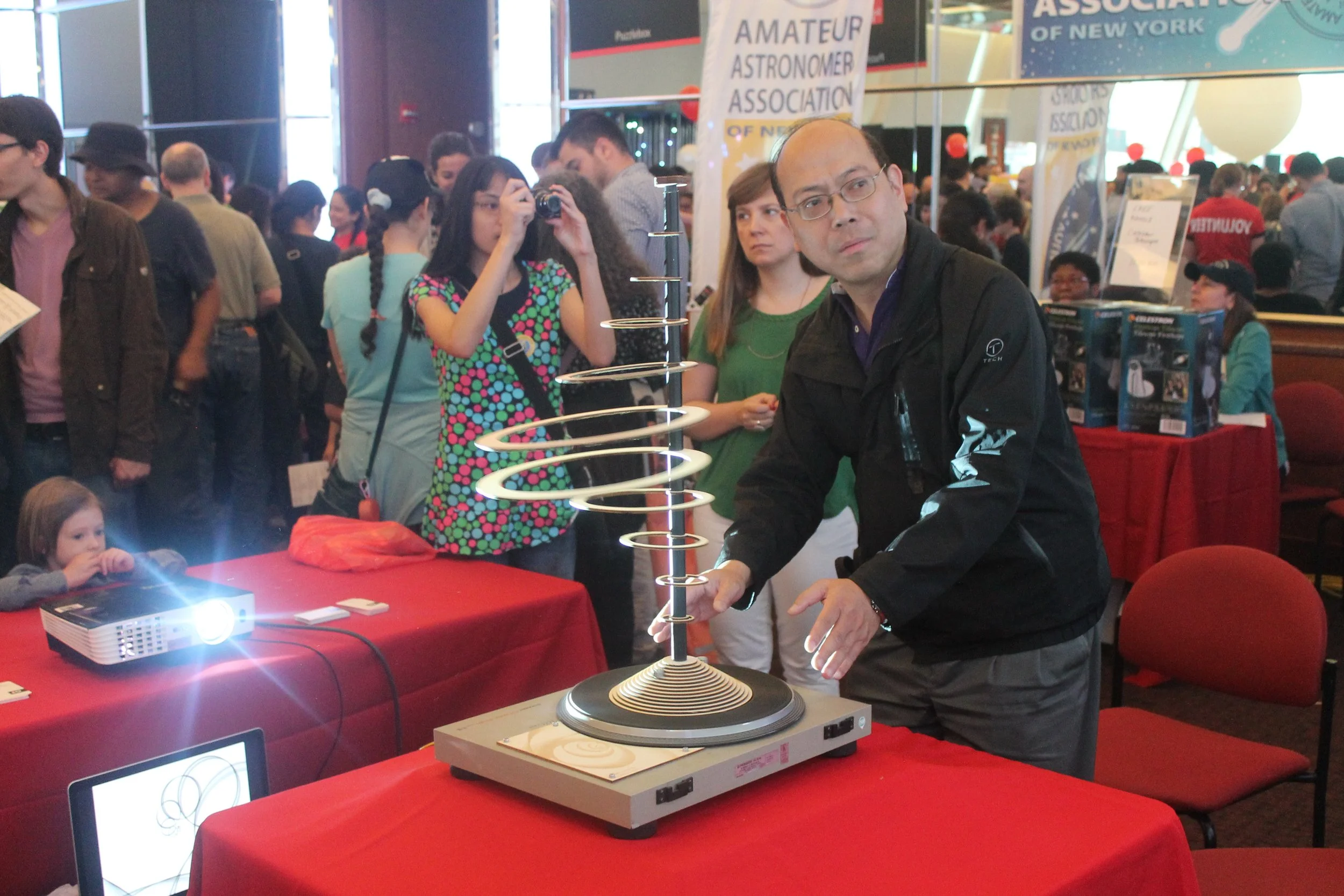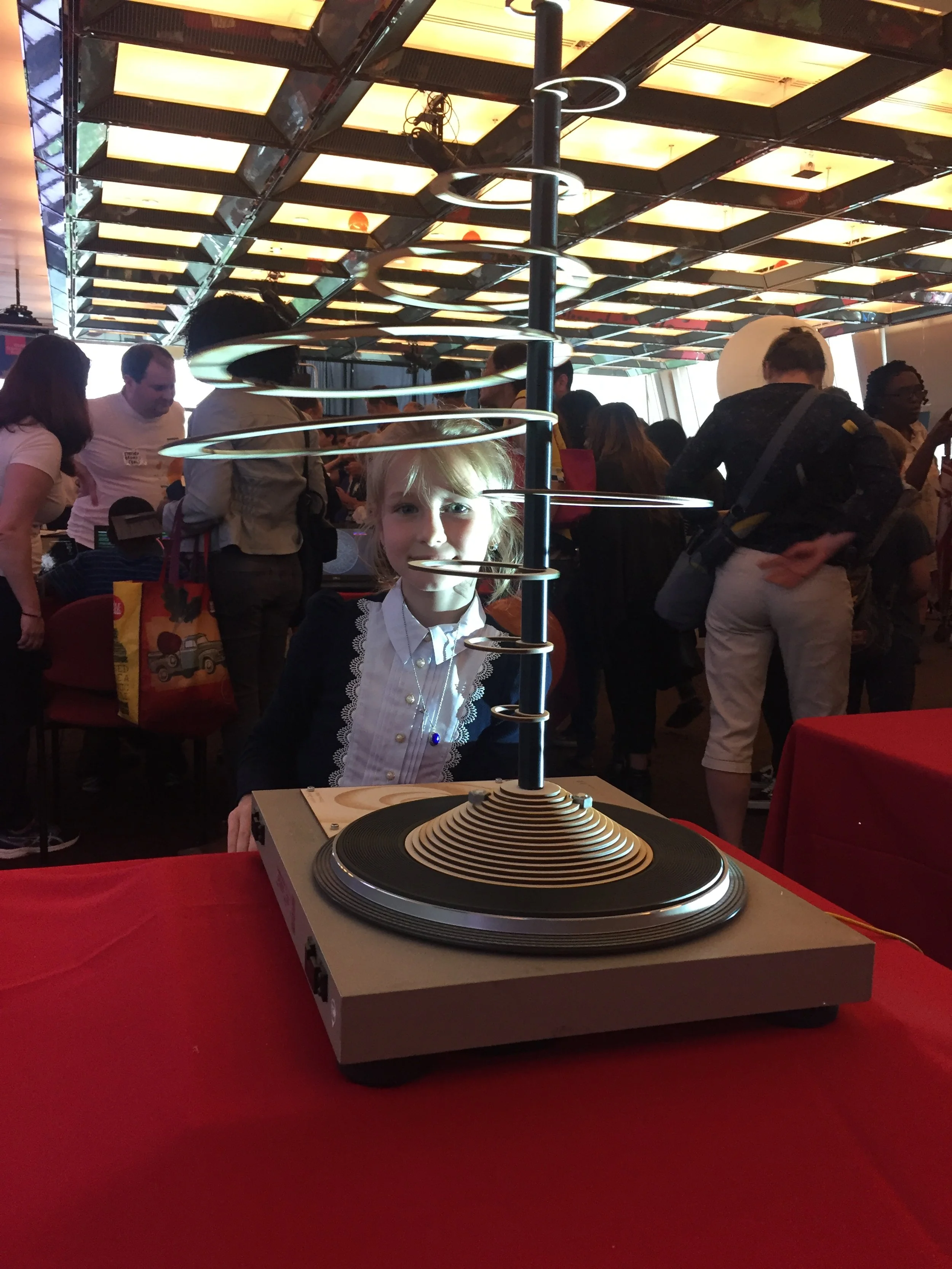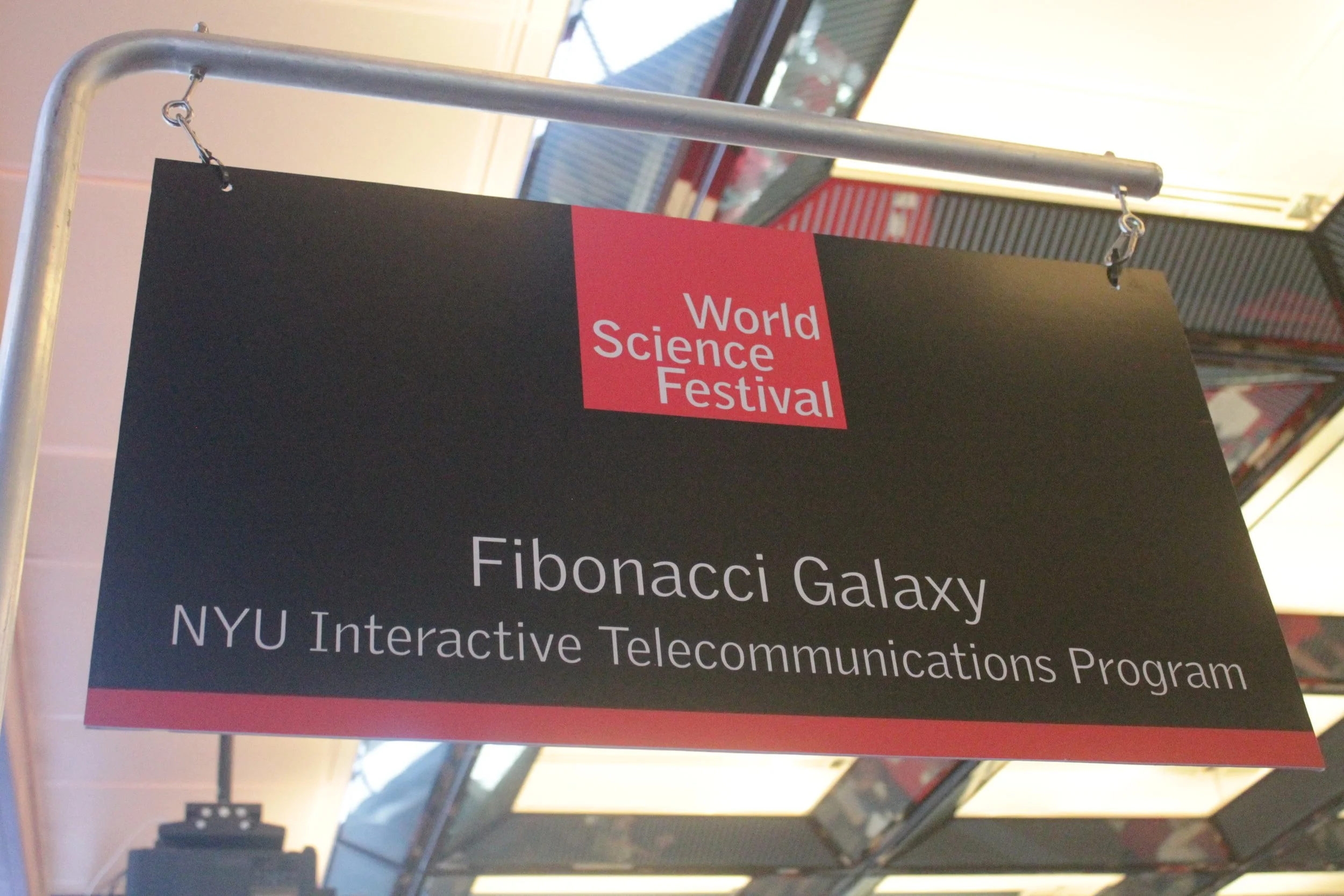Fibonacci Galaxy
Category: Art Installation
Team: Myself & Joakim Quach
Role: End-to-end design and fabrication
Date: December 2015
Background
Fibonacci Galaxy is an art installation, created by myself and Joakim Quach. The piece has been exhibited at ITP Winter Show 2015, and World Science Festival 2016. The piece is a celebration of the Fibonacci sequence and the Universe. The idea to combine Fibonacci with the universe came from discovering that the sum of two planets (planet pair) rotation rates, equals a number in the Fibonacci sequence, this underlines the fascinating fact that the fibonacci sequence can be found almost everywhere. The installation consist of two parts, a physical piece and a programmed sketch running on the computer, projected onto a wall through the physical piece.
Research
As you might be familiar with, the Fibonacci sequence can be found in architecture, nature, in lots of things that surround us and some research is showing that even how the solar system is alined could be a fibonacci sequence. This connection between Fibonacci and the solar system was very interesting to me.
Discovery and Inspiration
My inspiration for this project was reading Stephen Hawking’s ‘A Brief History Of Time’. The book was on the cutting edge of what was known about the nature of the universe in 1988, but since that time there have been extraordinary advances in the technology of macrocosmic worlds. I was trying to prove my concept about the connection of Fibonacci sequence to the Universe. My other inspiration came from my architecture project from my undergraduate in Germany when I had to fabricate a city that followed the Fibonacci sequence.
Fibonacci p5.js Sketch
I started exploring the Fibonacci sequence with circles in a p5 sketch. I played with different rotation and the placement of the circles. In this sketch I control the location of the circles by moving the mouse up and down.
Fabrication
I wanted to create a physical component of the sketch that would handle the interaction. I explored this by laser cutting some cardboard rings that would have the diameter the Fibonacci sequence. I played with the placement of the rings and found it interesting to place them vertically to obtain a similar effect as the sketch. One thing I really wanted to do was to introduce rotation similar to the solar system.
Arduino
To create this rotation, I used a turntable because I imagined my project as an art installation that the user could spin. To connect the physical interaction to the sketch I added an Arduino that could track the rotation of the turntable.
Integrating p5.js with fabrication
This is the first test using a p5 sketch that would show the Fibonacci sequence and how the users could spin the turntable. When the user spins the turntable, the rings in this sketch change location as well as speed. The sketch consist of multiple circles based on the fibonacci sequence, placed around the center of sketch. When the physical piece is spun, the sketch animates, moving the circles further apart and back again. The motion of circles is inspired by planetary rotation, and in whole represents a spinning universe. The sketch is shown as a projection going through the physical piece, lighting up the physical piece and leaving behind a shadow of it on the projected sketch.
Art Installation
The physical piece consist of a turntable, holding all the electronics to track the movement of the piece, and a pole, the spinning piece, placed on top of the turntable. The pole holds ten wooden circles, in five different sizes. The sizes are based on the fibonacci sequence, and grow from small to large and large to small. To interact with the piece, the user can spin the turntable at the base, to make the whole piece spin, and at the same time control sketch running on the computer.
NYU ITP Winter Show
This is the installation at the NYU ITP Winter show in 2015. As you can see, I decided to project the sketch through the physical installation so that you can see both the sketch and the shadow of the rings on the wall.
World Science Festival 2016
This project was invited to participate at the World Science Festival in NYC in the summer of 2016. While it was exhibited there, I watched how the installation would get children very excited to learn about Fibonacci and their parents explaining them.
